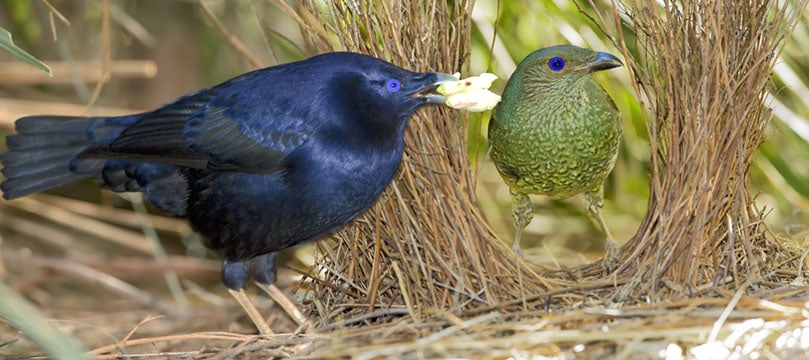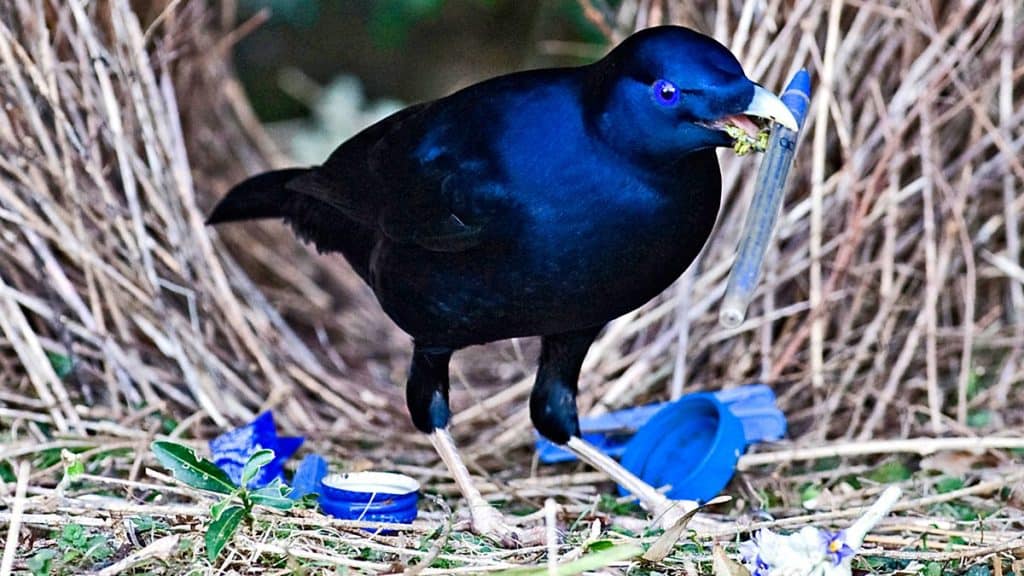By Matthew Adams
It’s Valentine’s Day! And ‘love is in the air’ for yet another year. Finding that ‘perfect match’ isn’t just a pursuit reserved for people though!
The selection process for a mate can be quite involved across the animal kingdom! It may not include all the hallmarks of human romance (candlelit romantic dinners, a bouquet of flowers, or chocolates). However, animals can use other cues help choose a particular suitor!
Let’s take a look at what mate choice is and reasons why animals choose their partners!
What is Mate Choice?
Mate choice can be simply thought of as the selection of a partner based on a particular trait (or traits) they possess. In this way, the couplings of two individual animals we observe is not simply random or by chance!
Across the animal kingdom, female mate choice is the norm. This makes sense given the unequal biological investment in reproduction across the sexes. Just think about all that amount of time females place in gestation of their unborn young alone!
Males typically have it easier, and compete for the attention of females. Their goal, produce more offspring. A female will take her pick from the group of males she assesses. The one she deems as having the “best traits” wins!
What Traits Affect Mate Choice?
Mate choice influenced by the “quality” of a suitor. This quality can be determined by using a range of sensory cues; including visual (elaborate ornamentation/colouring), chemical, auditory, and/or behavioural.
In theory, “higher quality” males are thought to be “healthier” and have more energetic resources to invest in these traits.

Benefits of Mate Choice
The benefits of selecting a mate can be obvious, when there is parental care or access to resources (i.e. territory, food etc.) The reason gets less clear where there is the absence of any direct contribution from the chosen partner.
Why would animals still be choosey in these circumstance? What benefit could exist for their young? The answer may lie in THEIR GENES!
The common hypothesizes of genetic benefits to mate choice include:
“Good Genes” – The traditional view of mate choice. In this situation females prefer to select the SAME “alpha” males, who may be bigger, stronger, and are better competitors. The success of these males is linked to their possession of an overall “better quality” genome.
Accordingly, females should be choosing the “leaders of the pack” because it means that their young will “fitter” by receiving these “good genes”.
“Genetic compatibility” – suggests females are choosing SPECIFIC males which best reflect compatibility with their own genes. This view presents a fuller picture of mate choice taking into consideration not just the effect of the male’s genes, but the specific interaction between the contributions of both the male and female.
Here in Australia, we have many fascinating examples mate choice in animals. One of the most elaborate ones is the Satin Bower Bird, a native species found in rainforests along the eastern coast of Australia.
Like a number of bird species, the males offer no parental care – and choice by females is based on the traits of the male. These showboating males build a “stage” (a structure fashioned out of sticks, referred to as their bower).

They not only decorate their bower (with found objects, both natural and artificial in origin) but perform complex behavioural displays of “dances” for visiting females. The bower itself does not actually serve as the nest, and this is carried out by the female all by herself.
Female bowerbirds have been famously observed to visit the bower of several males (perhaps even several visits to the same male) before making their choice.
It pays to be sure!
Researchers are still exploring to the benefits secured by mate choice in this species. If you would like to know more:
1) Check out this video by Melbourne Zoo of a Male Satin Bower Bird constructing his bower shared by Zoos Victoria. (You might find some other interesting videos on YouTube!) –https://www.facebook.com/watch/?v=778121729463424
2) Click through to this link by the Australian Museum in Sydney (https://australian.museum/learn/animals/birds/satin-bowerbird/)
3) Google Scholar (https://scholar.google.com.au/) search ( mate choice + bowerbird ) to read some of the more curious findings (i.e. younger females can actually be fooled into overestimating the ‘quality’ of a male by his use of flashy, shiny plastic decorations!)



